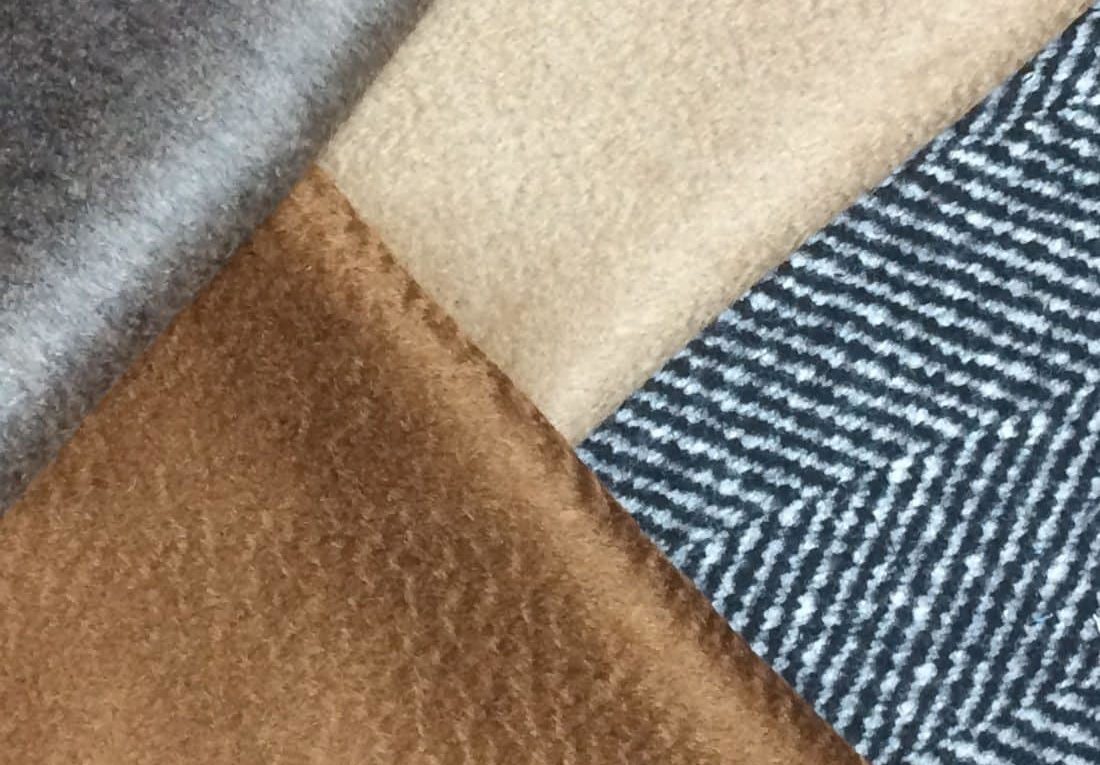Wool Basics – Understanding This Luxury Fabric in 3 Minutes
Introduction
Although the importance of wool has diminished over the last century, the fiber still retains a strong place in the clothing world due to its unique characteristics. Wool is a generic term applied to the hair of animals, mostly sheep, but also including Angora and Cashmere goats, camels, and llamas. It is a natural protein fiber, and is considered a luxury fiber not only of its price but also because of the lengths an owner must go through to ensure proper care. Despite these drawbacks, wool has endured as a fabric because of its resiliency, physical attractiveness, insulating ability, comfort, and the stubborn quality position it has established in the minds of the fashion conscious. It is a staple fabric in Men’s Suits and Sport’s Jackets, and within 3 minutes you’ll understand why.
Physical Characteristics
Quality of wool depends on the fiber fineness, length, scale structure, color, and cleanliness. The most sought after wools are very thin in diameter (10 to 20 micrometers), long in length (at least 2 to 5 inches), and the fibers themselves are free from defects. Here is where the term raw wool comes into play; oftentimes wool is recycled, and although this may lower the cost it also increases the likeliness of damage to the wool’s structure. Raw wool is the industry’s way of saying it has never been used before.
Properties
Appearance
Wool appears lofty, and even a small amount in a blend can give a fabric an appearance of body. Wool is the “look” other fibers are measured by and compared to. Drape, luster, and the fabrics hand depend on what type of wool we use and the percentage of that wool in the fabric, but it is safe to say that when it comes to looks, wool sets the standard.
Absorbency
Wool can absorb almost 20% of its weight in water before reaching saturation. In inclement moist weather it does an excellent job of keeping its wearer warm and dry, a great combination when it is raining and the temperature falls.
Heat Conduction
Wool is a poor conductor of heat, so it does an excellent job of keeping its wearer warm in cold weather. It traps still air, which when heated by the body amplifies the wools heat conduction qualities. A thin wool garment will often do a better job than a much thicker cotton one of keeping its owner warm on a brisk fall evening.
Resiliency
As mentioned earlier, wool does an excellent job retaining its shape. Fabrics made from wool tend to resist wrinkling and hold their shape well; this doesn’t mean you can just wad your suit jacket into a ball and throw it in your suitcase, but you should ensure wool is in your wardrobe if you travel often.
Durability
Although wool fibers can be bent as many as 20 thousand times without breaking (7 times cottons ability), wool is overall fragile fabric. Here are the things to watch out for:
Heat – Be very careful with heat. The safest way to pull out wrinkles is with steam, not an iron. The hot steam breaks down the hydrogen bonds, allowing the wool to relax and take on the desired shape. Ironing introduces a heat source that is too strong, and can cause irrevocable damage by denaturing the proteins (think of cooking an egg, you can’t un-cook it!)
Weak when wet – wool loses 1/3 of it fiber strength when soaked in water. Be very careful with wool when it is wet, and let it dry on a flat surface that does not create stress points that can leave permanent deformation.
A need for some moisture – Too much moisture is bad, but a wool garment needs at least some in the air will or it will become brittle. Not a problem if visiting the desert, but if you are moving to a very dry climate you may want to consider leaving your suits at your summer home up north.
Bleaches – Chlorine bleach is an oxidizing agent, and wool is very sensitive to it and alkalis such as strong detergents. Dry clean only or you may destroy the wool completely.
Insects – Moths and their larvae are just one of many insects that attack wool. It’s imperative that you invest in proper storage for your wool garments, or your investment will be literally eaten over the period of one summer. Mothballs are toxic, but there are many effective natural alternatives such as lavender and cedar. Remember to have your wool items professionally cleaned before storing them, or you may seal them with the moth eggs still alive.
Environmental Impact
Overall wool leans towards being a green choice. Most modern facilities treat the animals humanely (longevity and a healthy coat is in their best interests), and the price commanded by it in turn encourages the consumer to take better care of the garment thus extending it’s life. Although large farms may use substantial amounts of energy, water, and chemicals to bring the fiber to market, you have to weigh the alternatives.
